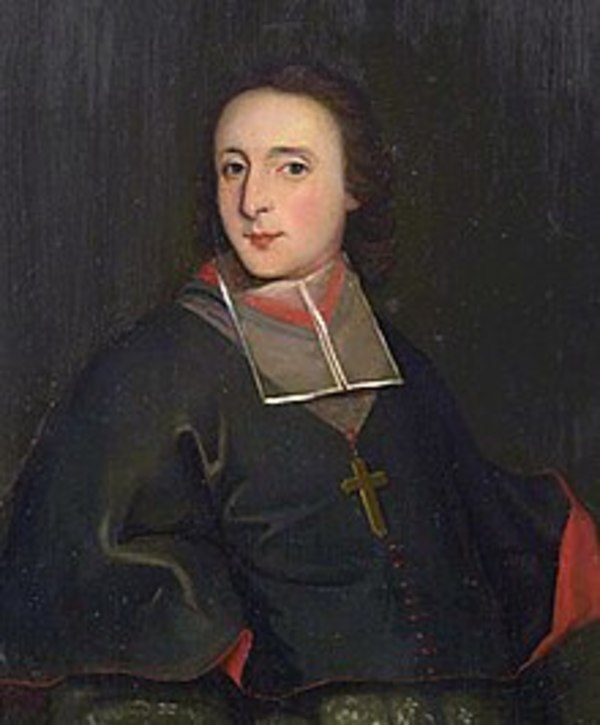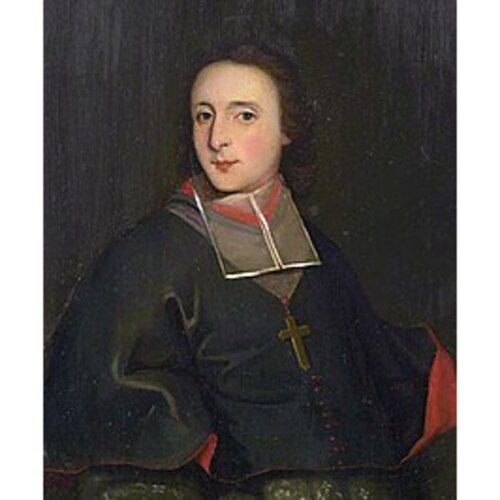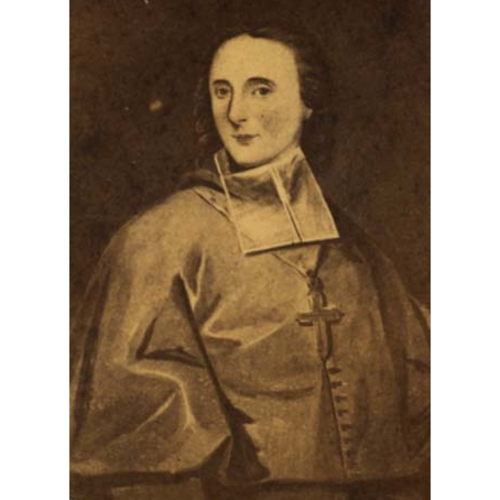
Source: Courtesy of Wikimedia Commons
POURROY DE LAUBERIVIÈRE, FRANÇOIS-LOUIS DE, priest, doctor of theology of the Sorbonne, fifth bishop of Quebec; b. 16 June 1711 at Grenoble, son of Claude-Joseph Pourroy de Lauberivière, judge of the treasury court of the province of Dauphiné, and of Marie-Anne de Saint-Germain de Mérieux; d. 20 Aug. 1740 at Quebec.
François-Louis de Pourroy de Lauberivière studied at the Jesuit college in Grenoble and at the Sulpician seminary in Paris; he was ordained a priest on 21 Sept. 1735 and became a doctor of theology on 1 April 1738. He was already a canon of the collegiate church at Romans when he was recommended to Cardinal Fleury by M. Couturier, the superior of Saint-Sulpice. On 22 March 1739 Louis XV appointed him to succeed Bishop Dosquet*, who had resigned. The bulls were dispatched on 20 July and the episcopal consecration took place at Saint-Sulpice on 16 August. On 20 June 1740 the prelate caused possession to be taken of his cathedral by a power of attorney dated 20 February.
On 10 June 1740 he sailed from La Rochelle on the Rubis, with his chaplain, two servants, and some priests and religious. Until they reached the Grand Banks of Newfoundland the crossing was pleasant; then sickness broke out on the ship, particularly affecting the passengers of lowly status. “This sickness,” Hocquart* wrote in a letter dated 6 Aug. 1740, “is an unremitting fever, accompanied by violent rushes of blood to the brain, and sometimes by eruptions.” Father Canot, who witnessed this epidemic, described conditions on the ship thus: “Picture a place the size of our garrets, where the light hardly ever penetrates, and where one can barely walk upright, crammed full of mattresses, above which are canvas sheets the length of a man and two feet wide, attached by the two corners to nails, and serving likewise as beds for these poor wretches, so that there were nearly 400 of them in such a small space. In such a woeful plight, would we priests have remained idle? You can imagine what one does and what one must do in these circumstances. However, the sickness spread, and we were trying to get as near as we could to Quebec. The crew was growing weaker day by day, and we had scarcely anyone who could handle the ship. The officers were forced to do it themselves, and anybody who had the strength lent a hand. It was in vain that we hoisted the flag which is the signal that one is in distress and needs help, nobody whatever came.” Many died, and the captain had to ask for sailors from Quebec to reach the port. In this desperate situation, the bishop used his energies unsparingly, along with the other priests.
At Intendant Hocquart’s request, Pourroy de Lauberivière disembarked at the Île-aux-Coudres to go on to Quebec in a shallop. He arrived there on 8 Aug. 1740, a Monday evening, and was welcomed by the authorities of the colony and by the whole town. In him they saw Bishop Laval come back to life again. On Tuesday he rested at the seminary, visiting the house and receiving the respects of the religious. On Wednesday he was Hocquart’s guest at dinner and on the 11th, a holiday, he went with the seminarists to their country house at Saint-Michel; on his return he visited the governor Beauharnois* de La Boische. The latter and the intendant wrote shortly afterwards: “His Excellency the bishop, who had arrived here in perfect health, fell ill on the 13th of this month. On the 14th and 15th, the fever showed no new symptoms. On the 16th it intensified; strokes followed; finally purpura set in; and on the 20th, at 8 o’clock in the morning, he passed away, regretted by all. He had made a favourable impression upon all classes of society. During the crossing, and in the short time that he lived among us, his virtue and his good intentions manifested themselves. He was buried the same day, without ceremony, because of the nature of his disease; and today [27 August] a solemn service is being held for him in the cathedral.” In such a short time, the prelate had acquired an extraordinary reputation for virtue, which caused several favours to be attributed to his intercession.
C.-É. Brasseur de Bourbourg, Histoire du Canada, de son église et de ses missions (2v., Paris, 1859), I, 263–68. Gosselin, L’Église du Canada, V, 353–405. Cyprien Tanguay, Monseigneur de Lauberivière, cinquième évêque de Québec, 1739–1740 (Montréal, 1885).
Cite This Article
Lucien Campeau, “POURROY DE LAUBERIVIÈRE, FRANÇOIS-LOUIS DE,” in Dictionary of Canadian Biography, vol. 2, University of Toronto/Université Laval, 2003–, accessed January 20, 2026, https://www.biographi.ca/en/bio/pourroy_de_lauberiviere_francois_louis_de_2E.html.
The citation above shows the format for footnotes and endnotes according to the Chicago manual of style (16th edition). Information to be used in other citation formats:
| Permalink: | https://www.biographi.ca/en/bio/pourroy_de_lauberiviere_francois_louis_de_2E.html |
| Author of Article: | Lucien Campeau |
| Title of Article: | POURROY DE LAUBERIVIÈRE, FRANÇOIS-LOUIS DE |
| Publication Name: | Dictionary of Canadian Biography, vol. 2 |
| Publisher: | University of Toronto/Université Laval |
| Year of publication: | 1969 |
| Year of revision: | 1982 |
| Access Date: | January 20, 2026 |




